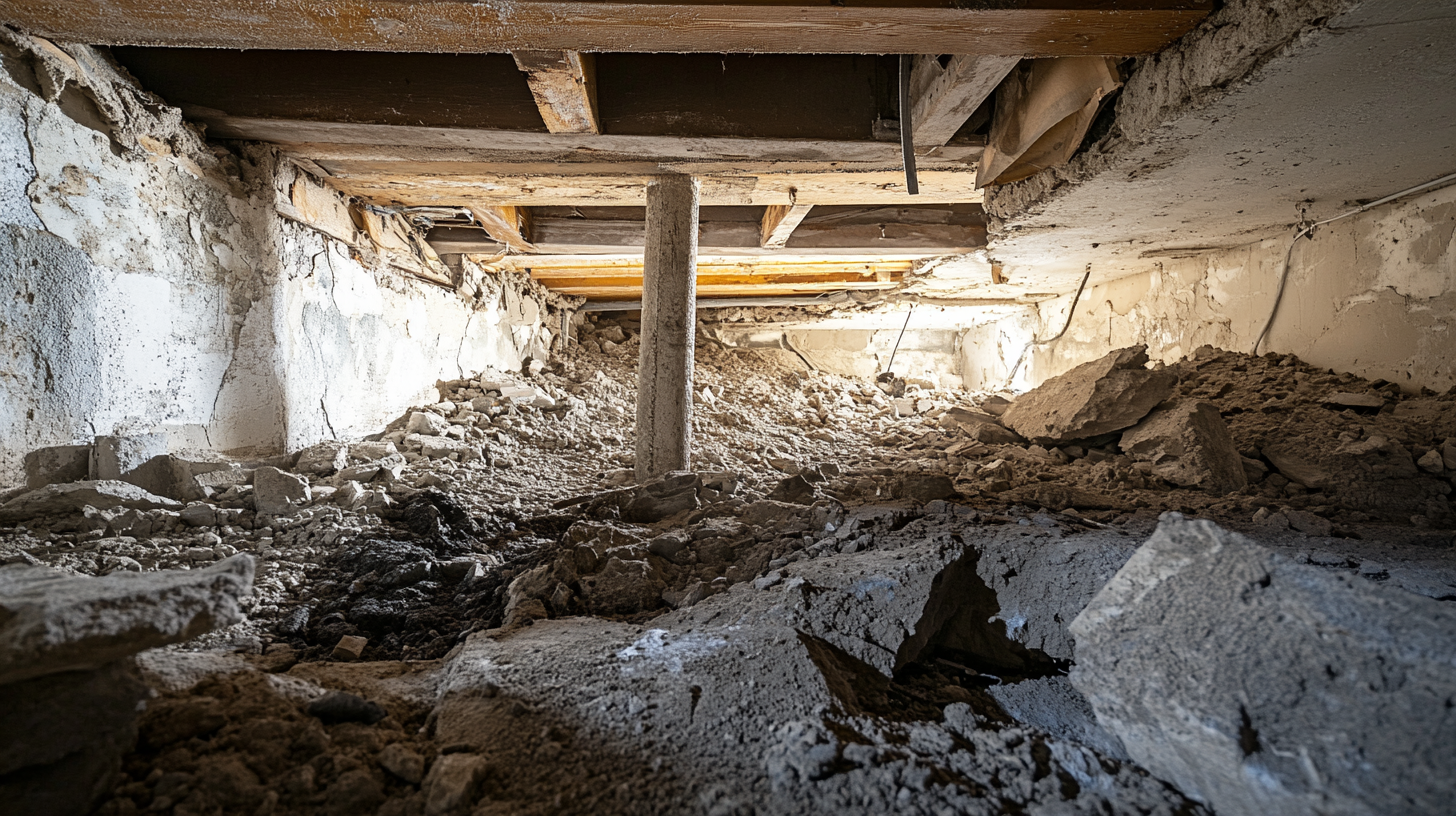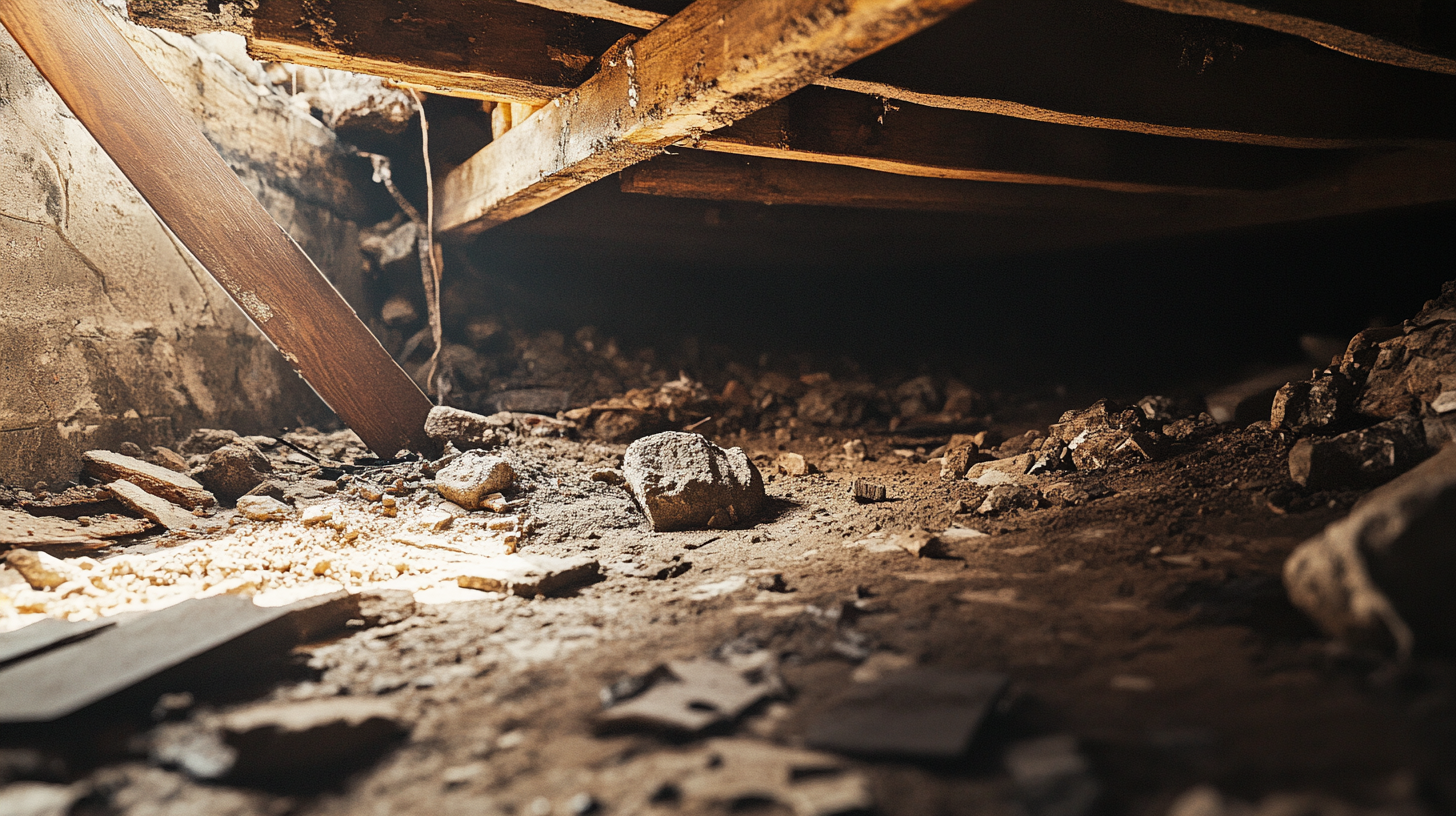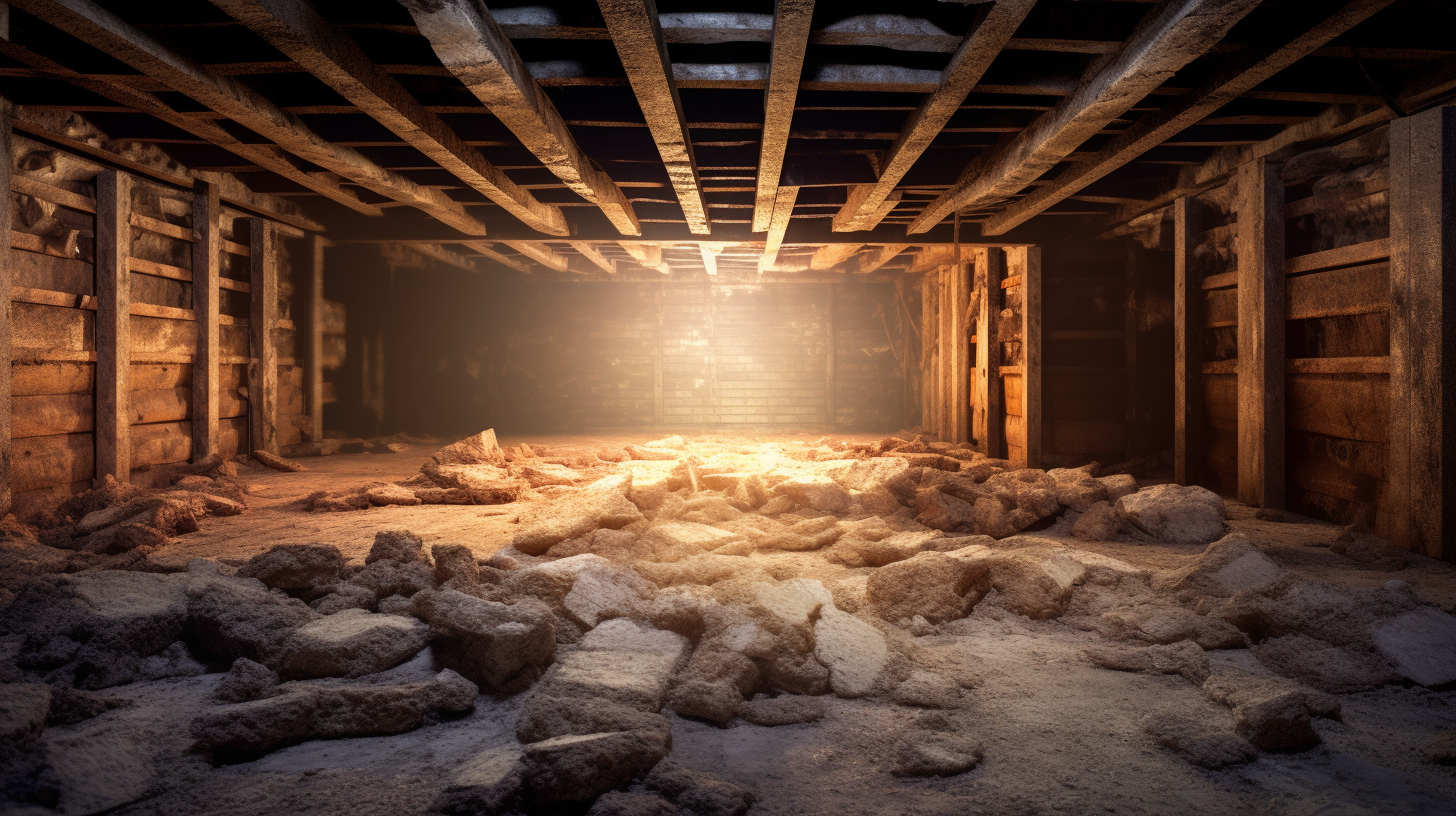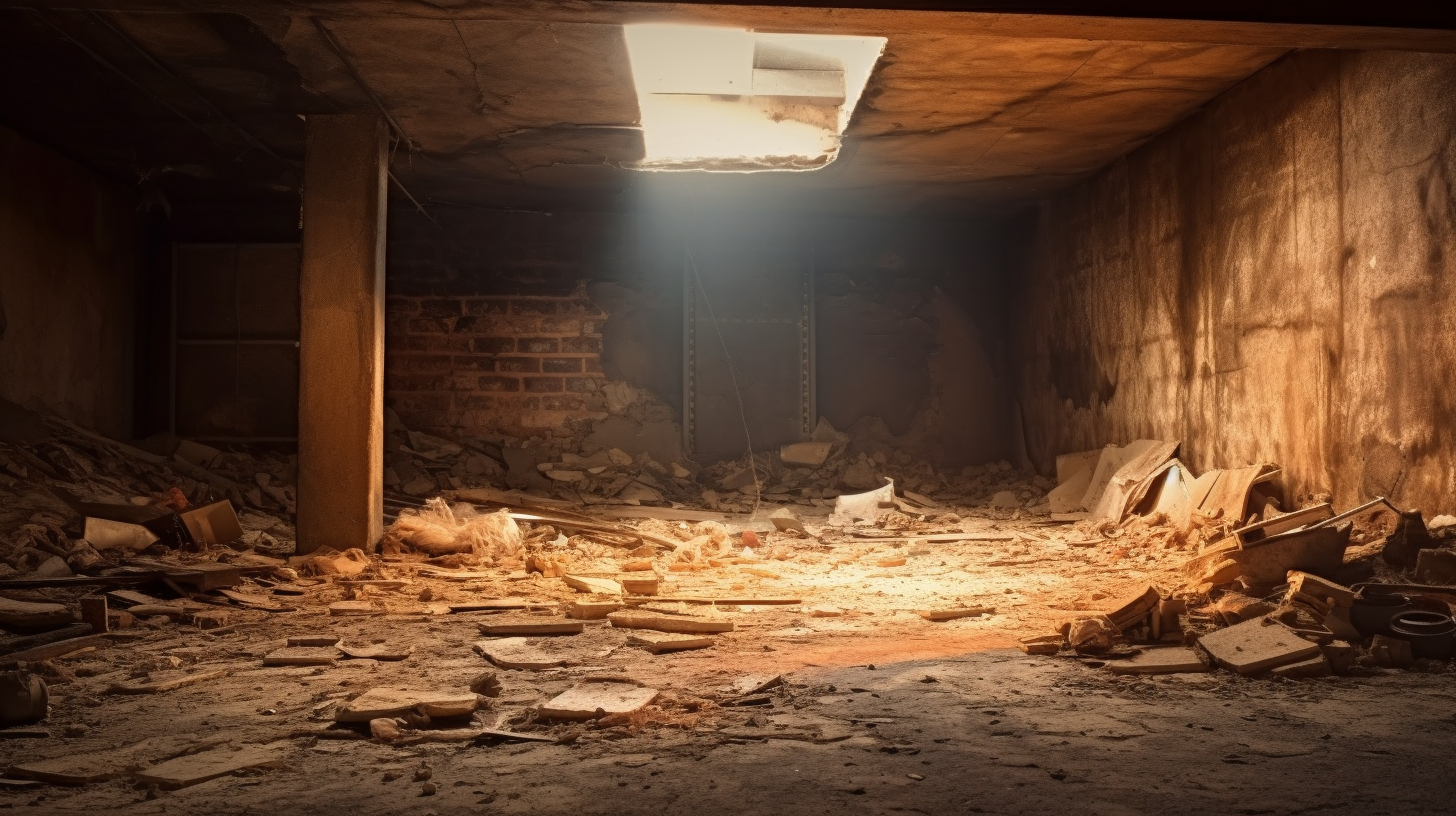The condition of your crawl space plays a pivotal role in determining the overall air quality and environment of your home. As a foundational element, the crawl space is more than just a hidden, underutilized area—it directly influences the health, comfort, and structural integrity of your living spaces. When crawl space air quality is compromised, it can have far-reaching effects that extend well beyond its confines.
Poor crawl space conditions, such as high humidity, standing water, or lack of ventilation, create an ideal environment for mold growth, pest infestations, and the development of musty odors. These issues not only threaten the crawl space itself but can infiltrate your home's air through a phenomenon known as the stack effect, where air rises from the crawl space into the upper levels of your home. This can lead to increased allergens, unpleasant smells, and even potential health risks for your family.
Understanding and addressing crawl space air quality is essential for creating a healthier living environment, protecting your home's structural elements, and enhancing overall energy efficiency. In this blog, we’ll explore the key aspects of crawl space air quality, its impact on your home, and practical solutions to mitigate common issues.
Why a Crawl Space Dehumidifier is Essential
The Role of a Dehumidifier
A crawl space dehumidifier is a critical component in maintaining the health and functionality of an encapsulated crawl space. Its primary function is to extract excess moisture from the air in this often enclosed and poorly ventilated area. By keeping the humidity levels within the optimal range of 30–60%, a dehumidifier helps create an environment that supports structural integrity and minimizes health risks. This device works continuously to counteract the natural tendency of crawl spaces to accumulate moisture, ensuring that the area remains dry, clean, and conducive to a healthy home.
Benefits of Crawl Space Dehumidification
One of the key benefits of using a dehumidifier in your crawl space is mold and mildew prevention. Excessive moisture creates the perfect breeding ground for harmful microorganisms, which can spread throughout your home and compromise air quality. A dehumidifier effectively halts their growth, protecting both your health and the crawl space environment.
By reducing moisture, a crawl space dehumidifier also enhances the structural integrity of your home. Wooden beams, joists, and insulation are particularly vulnerable to rot and damage caused by high humidity. By keeping these elements dry, you can prevent costly repairs and extend the life of your home's foundational components.
Improved indoor air quality is another significant advantage. Musty odors and allergens originating in the crawl space often migrate into your home, affecting the comfort and well-being of its occupants. A dehumidifier reduces these issues, creating a fresher and healthier living environment.
Finally, crawl space dehumidification promotes energy efficiency. Dry air allows insulation to function effectively and reduces the workload on your HVAC system. This means lower energy bills and a more environmentally friendly home.
Preparing to Install a Crawl Space Dehumidifier
Tools and Materials Needed
To successfully install a crawl space dehumidifier, gather all the necessary tools and materials beforehand. A dehumidifier specifically rated for crawl space use is essential to ensure it can handle the unique challenges of this environment. Equip yourself with a drainage hose or pump to direct collected moisture out of the crawl space, and a hygrometer to monitor humidity levels both before and after installation. Additional tools such as a power drill, screws, and mounting brackets may be required for securing the dehumidifier, especially in spaces where floor placement isn’t feasible. A flashlight or headlamp will also be invaluable for providing visibility in the often dimly lit crawl space.
Assessing Your Crawl Space
Before installing a dehumidifier, a thorough assessment of your crawl space is crucial. Start by checking the moisture levels using a hygrometer. If the humidity exceeds 60%, it indicates a need for dehumidification. Next, inspect the area for leaks, including plumbing or foundation issues, as these must be resolved to prevent ongoing moisture problems. Finally, clear the crawl space of any debris, old insulation, or standing water. This preparation ensures that the dehumidifier can operate efficiently and without obstruction, providing maximum benefits for your home.
Step-by-Step Guide to Installing a Crawl Space Dehumidifier
Choose the Right Location
Selecting an appropriate location for your crawl space dehumidifier is critical for optimal performance. Place the unit in a central and flat area of the crawl space to ensure even moisture removal throughout the space. Maintain a clearance of at least 12–18 inches around the unit to allow proper airflow and prevent overheating. Avoid positioning the dehumidifier in areas prone to standing water, as this can interfere with its operation and create additional maintenance challenges.
Prepare for Drainage
Proper drainage setup is essential to ensure the dehumidifier operates efficiently without interruptions. For gravity drainage, attach a hose to the unit’s drain port and direct it to a safe discharge location, such as outside the crawl space or into a sump pump basin. If gravity drainage isn’t an option due to the crawl space layout, use a pump-assisted drainage system. A condensate pump can effectively transport water to an exterior drain or a nearby sink, ensuring continuous water removal.
Secure Power Supply
Powering your dehumidifier safely is a key step in the installation process. Plug the unit into a grounded electrical outlet to minimize the risk of electrical hazards. If the outlet is not within reach, use an extension cord rated specifically for crawl space conditions. Ensure that all electrical connections are positioned away from any potential water exposure to maintain safety and reliability.
Set Humidity Levels
Adjust the dehumidifier’s settings to maintain an optimal humidity range of 30–50%. This range helps prevent mold growth and protects structural components while creating a healthier indoor environment. Monitor the dehumidifier’s initial performance to ensure it is operating effectively and achieving the desired humidity levels in the crawl space.
Test the System
Run the dehumidifier for a few hours to test the system’s functionality. Check for proper drainage flow to ensure water is being expelled efficiently. Use a hygrometer to verify that humidity levels are stabilizing within the target range. Confirm that there is adequate airflow around the unit and that it operates without obstructions or interruptions. This final step ensures your dehumidifier is ready to provide long-term benefits to your crawl space and home.
Maintaining Your Crawl Space Dehumidifier
Regular Cleaning
Keeping your crawl space dehumidifier clean is essential for maintaining its efficiency and extending its lifespan. Clean the filter every 2–4 weeks to ensure unobstructed airflow and optimal moisture removal. This simple step prevents dust and debris from clogging the system and reducing its performance. Additionally, wipe down the exterior of the unit regularly to prevent dust buildup, which can interfere with its operation over time.
Inspect Drainage
A properly functioning drainage system is critical for your dehumidifier's effectiveness. Periodically check the hose or pump for clogs or blockages that could impede water flow. Ensure that all connections are secure and free of leaks, as a compromised drainage system can lead to water pooling in the crawl space and reduce the unit's efficiency.
Monitor Humidity Levels
Consistently tracking the humidity levels in your crawl space ensures that the dehumidifier is performing as intended. Use a hygrometer to monitor the moisture levels and adjust the dehumidifier's settings as needed to maintain an ideal range between 30–50%. This proactive approach helps protect your crawl space from mold, pests, and structural damage.
Annual Servicing
To keep your crawl space dehumidifier running smoothly over the long term, schedule an annual inspection and servicing. This maintenance step includes checking internal components, ensuring the system is operating efficiently, and addressing any wear or damage. Annual servicing not only prolongs the unit’s lifespan but also ensures your crawl space remains a healthy and protected environment.
Benefits of Installing a Crawl Space Dehumidifier
Long-Term Protection
Installing a crawl space dehumidifier provides essential long-term protection for your home. By effectively reducing moisture levels, it helps prevent damage to the structural components of your crawl space, such as wooden beams, insulation, and flooring. Excess humidity can lead to wood rot, rust, and other forms of deterioration, which compromise the stability of your home. A dehumidifier minimizes these risks, extending the lifespan of your crawl space and reducing the likelihood of costly repairs.
Improved Air Quality
One of the most immediate and noticeable benefits of a crawl space dehumidifier is the improvement in indoor air quality. Excess moisture in the crawl space often fosters the growth of mold and mildew, which release allergens and musty odors into your home. These contaminants can circulate through your living spaces, affecting respiratory health and overall comfort. A dehumidifier prevents these issues by keeping the crawl space dry, creating a healthier and fresher environment for your family.
Energy Efficiency
A crawl space dehumidifier contributes to the energy efficiency of your home by creating more favorable conditions for your HVAC system. When the crawl space is damp, the added moisture can make your heating and cooling system work harder to maintain comfortable indoor temperatures. By controlling humidity levels, the dehumidifier reduces the strain on your HVAC system, leading to lower energy consumption and reduced utility bills over time.
FAQs
Contact Trench Guys Today!
Trench Guys will do everything we can to ensure your experience with us is excellent.
Request A FREE Estimate
Request a Free Estimate Form
Checkout Recent Post




Got a Question? We’re Here to Help.
You can arrange an appointment or make an enquiry by phone or email, orget in touch to us via our contact form.



